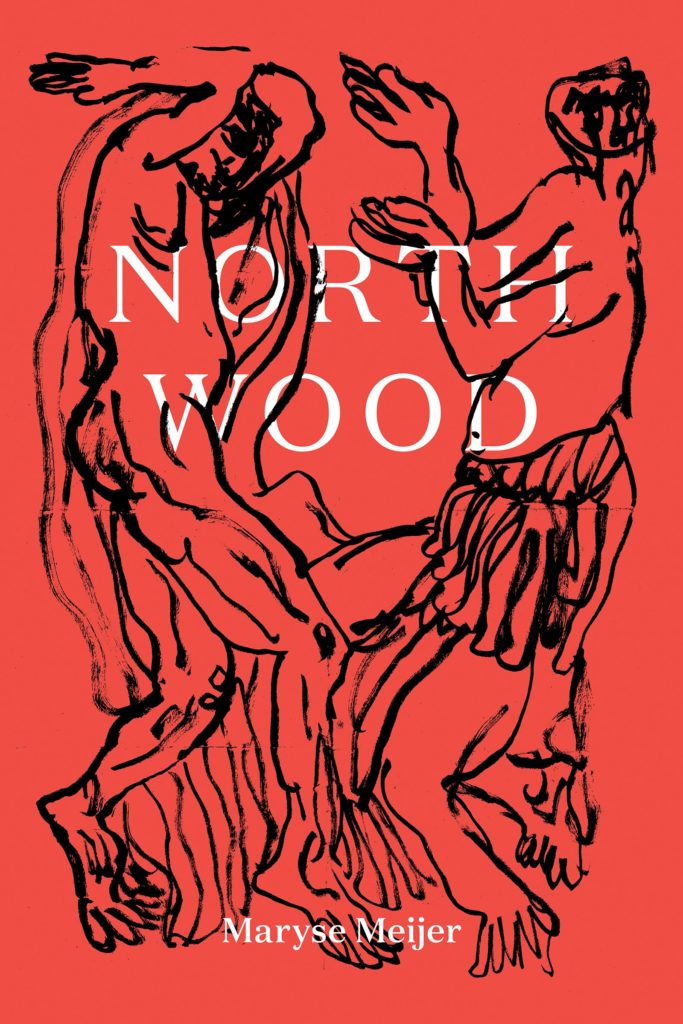
It’s been several weeks since I first read Maryse Meijer’s Northwood, and I’m still sorting out how best to classify it. For the record, I mean that in the “this is a feature, not a bug” kind of way. This is the sort of book for which the term “hybrid works” was invented: Meijer blends the quotidian with the folkloric, tells much of the story in verse, and utilizes a host of formally inventive page layouts along the way. If the most striking figure of the book’s design — white text on black pages — isn’t indicator enough, I’ll say it clearly: this is not a conventional read.
This is a visceral book, announcing itself as such early on with passages like “the foxes fucking their way through the evenings/ their screams so human it chilled me,/ high slaughterhouse sound” accentuating that sense of both nature and danger. Structurally, there’s a sense of fragmentation: some sections unfold like taut prose, laid out in familiar ways, while others are fragmented and cast across the height and width of the page.
Aspects of Northwood feel familiar: the narrator talks with her mother and grapples with her mother’s cancer; she muses on isolation when living in the woods, and a relationship that she begins while there is fraught with questions of desire and physicality. All the while these elements bounce off of one another, creating a kind of vortex in which life, love, and death are inseparable.
The narrative of Northwood moves around in time. The array of characters is precise: the narrator, her lover, her mother. If this feels archetypal, you’re not wrong: several of the chapter titles take their names from tarot cards (“The Magician,” “The Hanged Man”), while others allude to mythology (“Daphne,” “Adonis”). So we’re at once in a mundane realm, where the narrator’s mother can quiz her about her time in the woods at a barbecue and in a mythologically fraught world where strange figures retain a dizzying power.
Perhaps the work that this is closest to is Anne Carson’s Autobiography of Red, despite having very few formal elements in common. Both blend a familiar world with a more fantastical one, and both derive considerable power from the means by which these two aspects are inseparable: you can’t really view the more surreal elements of either as simply metaphorical, and yet both also work due to the juxtaposition of fantastical figures in mundane settings. In telling this particular story of a life, Meijer takes abundant risks, and in the end the work she’s created is a singular and gripping one.
***
Northwood
by Maryse Meijer
Black Balloon Publishing; 128 p.
Follow Vol. 1 Brooklyn on Twitter, Facebook, and sign up for our mailing list.
